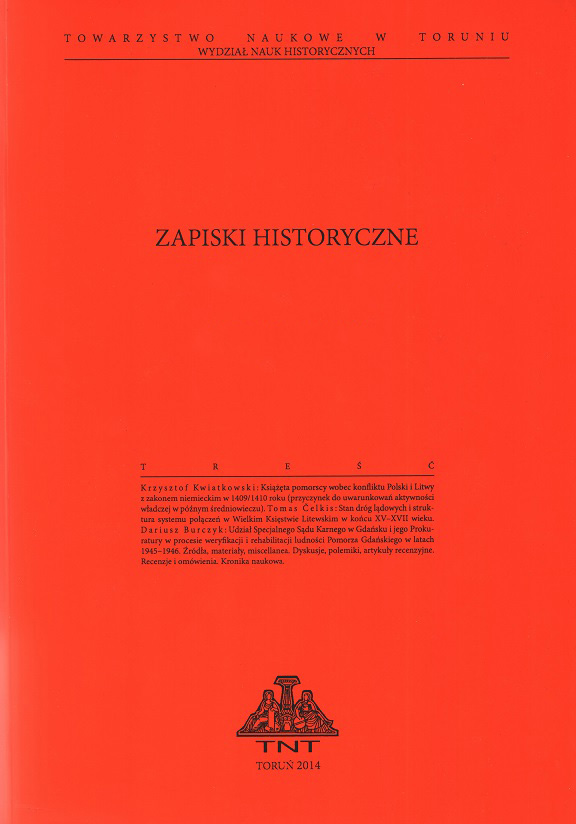The Problem of the Demarcation of the Border between Estonia and Russia in 1917–1920
The Problem of the Demarcation of the Border between Estonia and Russia in 1917–1920
Author(s): Wojciech MaterskiSubject(s): Historical Geography, Diplomatic history, Military history, Political history, Pre-WW I & WW I (1900 -1919), Interwar Period (1920 - 1939), History of Communism
Published by: Towarzystwo Naukowe w Toruniu
Keywords: Republic of Estonia; the fall of the Russian Empire; Bolshevik Revolution; demarcation; conflicts over borders; peace treaties; right of peoples to self-determination
Summary/Abstract: The article addresses an important but little-known issue of the conflict over the demarcation of the border between Estonia and (Soviet) Russia in the years 1917–1920, which was important for the international order in North-Eastern Europe after the First World War. The dispute over this matter was much broader than just bilateral, as the normalization of the situation in the Baltic region conditioned the possibility of extending the international order established by the Treaty of Versailles to Eastern Europe. This issue has not received a separate monograph so far, although it was addressed in historical publications, especially in the countries directly concerned. The analysis of the state of research, confronted with primary sources, constitutes the base for the article. After the Bolshevik Revolution of 1917, Estonia quickly became an object of interest for the Bolsheviks, which almost ended up with the republic losing its independence. However, the politicians of the newly born Republic of Estonia showed great political skills by manoeuvring between Germany, the White and Red Armies, obtaining British aid and establishing military cooperation with Latvia, which was equally threatened. However, it was the Polish-Soviet War, which ended with the defeat of the Red Army, that turned out to be crucial. During disputes with the Whites and the Bolsheviks with regard to demarcation, Estonia successfully, at least in a short-term perspective, defended its historical rights to the regions of Narva and Petseri against its aggressive neighbour. From the point of view of diplomatic possibilities, the Estonians achieved everything that was achievable. The peace treaty signed in Tartu in 1920 ensured ‘perpetual guarantees’ which, however, lasted only for less than two decades.
Journal: Zapiski Historyczne
- Issue Year: 85/2020
- Issue No: 4
- Page Range: 89-110
- Page Count: 22
- Language: English

